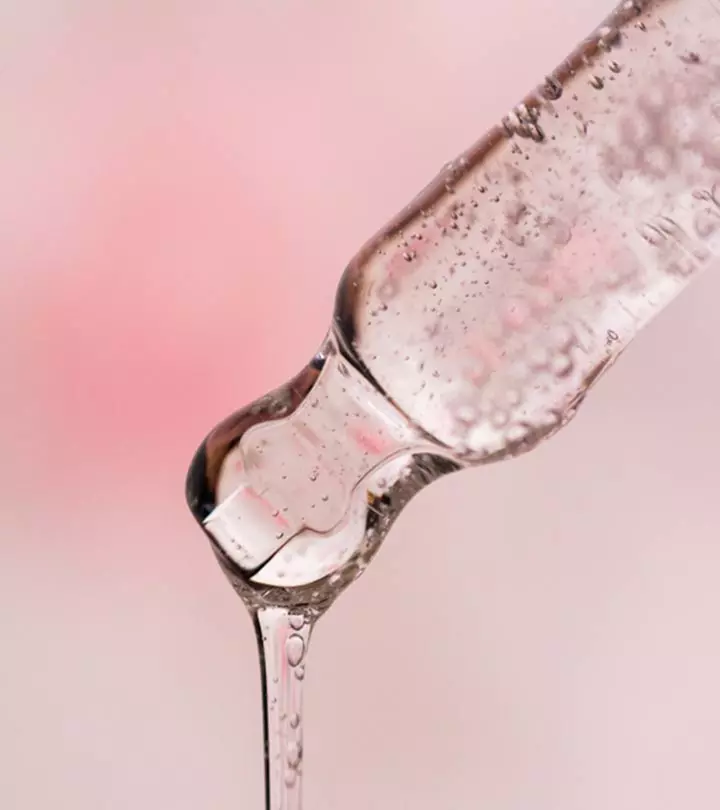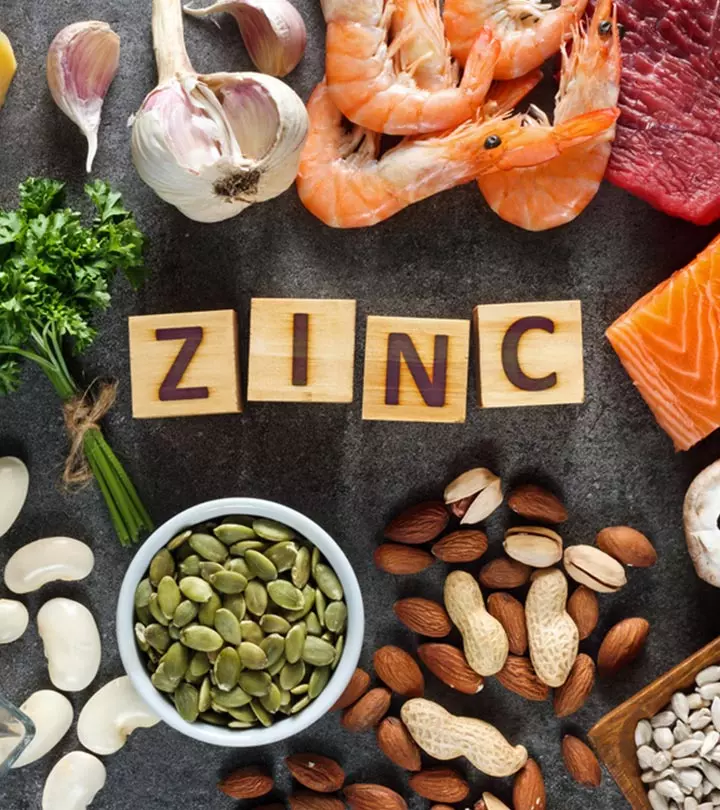Dermaroller For Hair Growth: Benefits, Uses, & Side Effects
Microneedling is known to promote hair growth, but it can have some adverse effects.

Image: Shutterstock
Microneedling for hair loss can be highly effective. Skin care professionals increasingly turn to dermarolling or microneedling as the best treatment. It works by causing superficial wounds on your skin to revitalize it and minimize aging signs. Yet you may wonder how effective this will be at boosting hair growth. The good news is that evidence shows scalp dermarolling can improve hair growth. This article explains how derma rolling can aid hair growth, how to use a derma roller, and the side effects. Take a look.
In This Article
Is Dermaroller Effective For Hair Growth?
Dermarolling or microneedling is a cosmetic treatment that addresses various skin concerns. The process enhances the collagen production of the skin, which makes the face young-looking.
So, what is microneedling? It’s all about using tiny needles to create micro-injuries that can boost collagen and potentially aid in hair growth. Thus, microneedling can be beneficial for people suffering from androgenic alopecia or male pattern baldness.
Evidence suggests that the similar process of creating tiny injuries on the scalp may also help in hair regrowth (1).
Thus, microneedling can be beneficial for people suffering from androgenic alopecia or male pattern baldness.
Now let’s take a look at the science behind hair growth through dermarolling.
Key Takeaways
- Dermarolling or microneedling that helps reduce signs of aging making your face look smooth, plump, and youthful, can also be used to stimulate hair growth.
- Using natural products like peppermint oil along with dermarolling may help enhance its hair growth stimulating effects.
- It may result in minor bruising, redness, or swelling in the initial five days of the process.
The Science Behind The Benefits Of Dermaroller For The Hair
Dermarollers help enhance the collagen production of the scalp. Increased production of collagen supports the growth of healthy hair and also improves blood flow. The tiny injuries induce an epidermal reaction where the epidermis sends blood to heal these injuries. This results in an increased blood flow to the scalp. It is combined with minoxidil solution for androgenic alopecia.
However, after the dermarolling process, apply a solution that will assist in hair growth. One of the most popular remedies is to apply peppermint oil. Peppermint oil helps promote hair growth (2). However, peppermint oil might cause skin sensitivity and tingling sensation. To prevent this, mix peppermint oil with a carrier oil like castor oil.
Research has shown a link between the regulation of adult stem cells with hair follicle proliferation and maintenance (3). Active stem cells in your hair follicles can become progenitor cells. These progenitor cells can help follicles to become hair. Microneedling is a great technique to stimulate the production of stem cells that in turn, can help produce progenitor cells (4).
Here’s how to use a derma roller for hair growth.
How Do You Use A Dermaroller For Hair Growth?
Before the procedure, the practitioner uses a topical anesthetic that helps reduce any pain you might feel during the treatment.
The dermaroller is equipped with needles 1 to a few millimeters in size. This device is rolled over the affected area, creating minor injuries.
Depending on the affected area, the microneedling session can last between 10-15 minutes. After the process, your practitioner will apply a solution in the affected area to aid in hair growth.
 Quick Tip
Quick TipMicroneedling treatment comes with several side effects. Let’s know what they are in the following section.
Side Effects Of Using Derma Roller
- Bruising – The injuries may cause a scar on your scalp.
- Redness – Your scalp may become red and inflamed.
- Swelling
- Pain
However, the side effects of dermarolling diminish after five days of the treatment.
 Pro Tip
Pro TipPeople with certain conditions should avoid microneedling. Consult a doctor before the treatment if you:
- Have diabetes
- Are on blood thinners and other medications
- Are pregnant
Follow these precautionary measures after a microneedling session.
Precautions To Take After A Microneedling Session
is key to ensuring the best results and avoiding unwanted side effects. Check out these simple tips to keep your skin happy and healthy as it heals.
- Your scalp becomes sensitive after a microneedling session. And using raw peppermint oil right after the treatment may cause itchiness and a burning sensation. Thus, mix the peppermint oil with a carrier oil before applying it to the scalp to minimize its effect.
- Wear a hat to keep your scalp safe and protected from the sun.
- Microneedling treatment might cause scalp infection if not taken care of properly. Hence, keep the treatment area clean and apply topical antibiotics to prevent bacterial formation.
A derma roller and derma stamp have certain differences that are useful to know. Let us learn what they are in the next section.
Derma Roller Vs. Derma Stamp
A derma roller looks like a small paint roller with several tiny needles all over its surface. The needles make tiny punctures on the skin when they are rolled over it. The rolling movement of a derma roller covers a greater surface area, and it is available in different needle lengths. It is a versatile tool that can be used on various parts of the body. Unlike the rolling motion of a derma roller, a derma stamp is pressed directly onto the skin in a tapping motion. Derma stamps are beneficial for targeting specific areas or scars that may need specialized care.
At first glance, a derma roller can look intimidating. But research shows that this treatment is effective in hair growth and keeps the hair healthy. If you are new to it, begin with dermarolling once a week to get your scalp used to the treatment.
Microneedling is a minimally invasive cosmetic procedure that creates superficial wounds on the skin to enhance collagen production. Apart from treating skin care woes, you can also use microneedling for hair loss. The tiny injuries on the scalp may help boost hair regrowth. Depending on the treatment area, the session may last 10-15 minutes. However, there can also be side effects like bruising, redness, swelling, and pain soon after the treatment. But, these will vanish in some days. Always consult an experienced and trusted doctor to get this procedure done.
Frequently Asked Questions
Can scalp microneedling regrow your hair?
Yes, microneedling treatment can help in hair regrowth.
How often should you dermaroll your scalp?
Microneedling once every 3 weeks is best.
Should I wash my hair after dermarolling?
According to experts, one must avoid hair washing after dermarolling. However, consult a professional if washing hair is of utmost necessity.
Is a dermaroller effective without minoxidil?
Demraroller may be effective without minoxidil. However, it gives the best results when used with minoxidil (1).
How do I clean my scalp before dermarolling?
Clean your scalp gently with a mild shampoo before dermarolling. But make sure the shampoo is effective in removing dirt and excess oil from your scalp.
Can I use a dermaroller on wet hair?
No, it is not safe to use a dermaroller on wet hair. Make sure the hair is dry.
Is aloe vera good after you dermaroll?
Yes, you may use aloe vera after you dermaroll. But make sure to use it at least four days after treatment.
What happens if you dermaroll too often?
The scalp doesn’t get its required time to heal if a dermaroller is used often. So, give it at least 2 weeks to recover.
How hard should you press the dermaroller?
You may press the dermaroller at an intensity that is comfortable for you.
The video unravels the science behind derma-rolling, the popular skincare technique. It offers valuable insights into promoting hair growth and overall hair and skin health. Watch the latest episode now to make informed choices for yourself.
References
Articles on StyleCraze are backed by verified information from peer-reviewed and academic research papers, reputed organizations, research institutions, and medical associations to ensure accuracy and relevance. Read our editorial policy to learn more.
- A Randomized Evaluator Blinded Study of Effect of Microneedling in Androgenetic Alopecia: A Pilot Study
https://www.ncbi.nlm.nih.gov/pmc/articles/PMC3746236/ - Peppermint Oil Promotes Hair Growth without Toxic Signs
https://www.ncbi.nlm.nih.gov/pmc/articles/PMC4289931/ - Stimulation of hair follicle stem cell proliferation through an IL-1 dependent activation of γδT-cells
https://www.ncbi.nlm.nih.gov/pmc/articles/PMC5714500/ - Efficacy of Microneedling Plus Human Stem Cell Conditioned Medium for Skin Rejuvenation: A Randomized, Controlled, Blinded Split-Face Study
https://www.ncbi.nlm.nih.gov/pmc/articles/PMC4198585/
Read full bio of Dr. CP Thajudheen
Read full bio of Anjali Sayee
Read full bio of Eshna Das
Read full bio of Monomita Chakraborty




























Community Experiences
Join the conversation and become a part of our empowering community! Share your stories, experiences, and insights to connect with other beauty, lifestyle, and health enthusiasts.